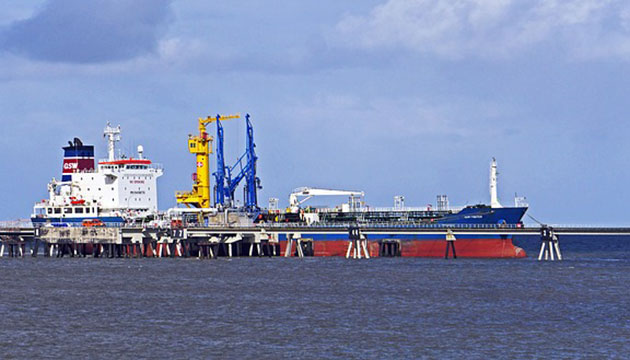Global warming isn't a prediction. It is happening. - James Hansen.
One of the most pressing problems that confront the world right now is the rising temperature of the oceans monitored by scientists over the years. Because water constitutes more than 70 percent of the earth and more than 90 percent of water is found in oceans, this phenomenon has caused scientists and responsible leaders of many nations to worry about the reality of global warming or climate change.
In 2014, the Intergovernmental Panel on Climate Change reported that scientists were more than 95% certain that most of global warming is caused by increasing concentrations of greenhouse gases and other human activities. Climate models included in the report indicated that during the 21st century, the global surface temperature is likely to rise further to 0.3 to 1.7 °C for their lowest emissions scenario and 2.6 to 4.8 °C for their highest. These findings have been recognized by the national science academies of the major industrialized nations.
The consequence of this rise in temperature is the frequent occurrence of the unprecedented volume of rainfall that continues to cause destruction of properties and loss of lives during typhoons that cause floods and landslides especially among people living near coastal shores.
The Scientific Basis of Climate Change
The basis of the conclusions about the relationship of the use of fossil fuels and development efforts were based on comparative and longitudinal studies which showed that the rise in temperature based on the data gathered from the monitoring of the various oceans corresponded with the increase in the use of fossil fuels during the industrial age when aggressive development projects became the norm for many nations.
Comparative and longitudinal studies are conducted using samples from various sites, in this case, different oceans. This was done over a long period of time to determine consistency of results. Although many comparative studies use correlation models, when the different findings show consistent highly significant results across the earth for a long period of time, these could already be a basis for concluding cause-and-effect relationships with a high degree of confidence. These only means that indeed the increasing volume of fossil fuels use is the cause of climate change.
The products of combustion of fossil fuels are oxides of carbon and hydrogen (the two largest components) nitrogen, and sulfur. Except for water, the lightest gas that easily escapes to the atmosphere to join the cloud, the rest is heavy gases that stay close to the surface of the earth to form the so-called greenhouse gases that prevent the escape of heat, a product of combustion.
Scientists explain that the rise in temperature of the ocean results in 1) greater evaporation of water vapor, 2) thermal expansion, 3) and the melting of land glaciers. Effect of number one above is manifested in the unprecedented amount of rainfall that occurs with frequency in many places across the globe that results in floods and landslides never before experienced by many communities in living memory. Effects of number two and three explain why coastal areas become catastrophically devastated during typhoons and storms that have caused death and destruction. Fishing communities that have lived for many generations in these places have to be relocated to safer areas far from their main source of livelihood.
Despite these findings, there are still a few who consider climate change a hoax. They refuse to acknowledge the fact that the change in climate is caused by the activities of man. Several years ago, an unbeliever, cited the data of NASA that the atmosphere is becoming cooler, and concluded that climate change is nothing but a matter of seasonal change. However, the atmosphere is only a tiny fraction of the earth. The impact of the changes in the atmosphere cannot be compared to those changes in the water system which constitutes more than two-thirds of the earth.
The Global Challenge and the Response of the Science and Technology Sector
Many leaders across the world have been putting together their collective wisdom, energy and resources to address the reality of global warming with its devastating effects. They continue to look for viable and creative solutions to arrest the rise in ocean temperature during international forums that are held regularly. They continue to challenge many sectors of society to put this problem in their consciousness and in their agenda.
Aware of the danger caused by climate change, on December 12, 2015, 196 world leaders across the globe, meeting in Paris reached a landmark agreement to combat climate change and to accelerate and intensify the actions and investments needed for a sustainable low carbon future. The Paris Agreement, for the first time brings all nations into a common cause to undertake ambitious efforts to combat climate change and adapt measures to enhance support to developing countries to do so. By doing such, the world leaders charted a new course in the global climate effort.
The Paris Agreement’s central aim is to strengthen the global response to the threat of climate change and to insure the global temperature rise this century to well below 2 degrees Celsius above pre-industrial levels. It also commits to pursue efforts to limit the temperature increase even further to 1.5 degrees Celsius in the future.
Of course, the sector most prepared to respond to the problem, because of their training and expertise, is the science and technology group. As expected, so far, this sector has offered and actually started to work and even accomplished projects on the following solutions: 1) use of renewable sources of energy, 2) invention of more efficient structures and machines, and 3) energy saving. All of these measures aim to decrease reliance on fossil fuels.
The current alternative sources of energy available and in use in the Philippines are sourced from geothermal, hydroelectric, solar, wind and biomass. Another potential source, ocean energy is still untapped.
Three years ago, it was reported that the different sources only constitute 30 percent of the energy mix. The total actual potential energy from these various sources is estimated to be 13,650.29 Megawatt (MW), but so far, the installed capacity is only 2,937.06 MW for grid use. Of all the different sources, it is the hydro power resource that has the highest potential at 8,897.30 MW of which 139.19 MW are only installed, followed by solar with a potential of 2,544.81 MW with only 131.90 MW installed.
Clearly this shows that there is still so much to be done. Let us all hope that nations all over the world will move fast enough to address this problem before it is too late.













